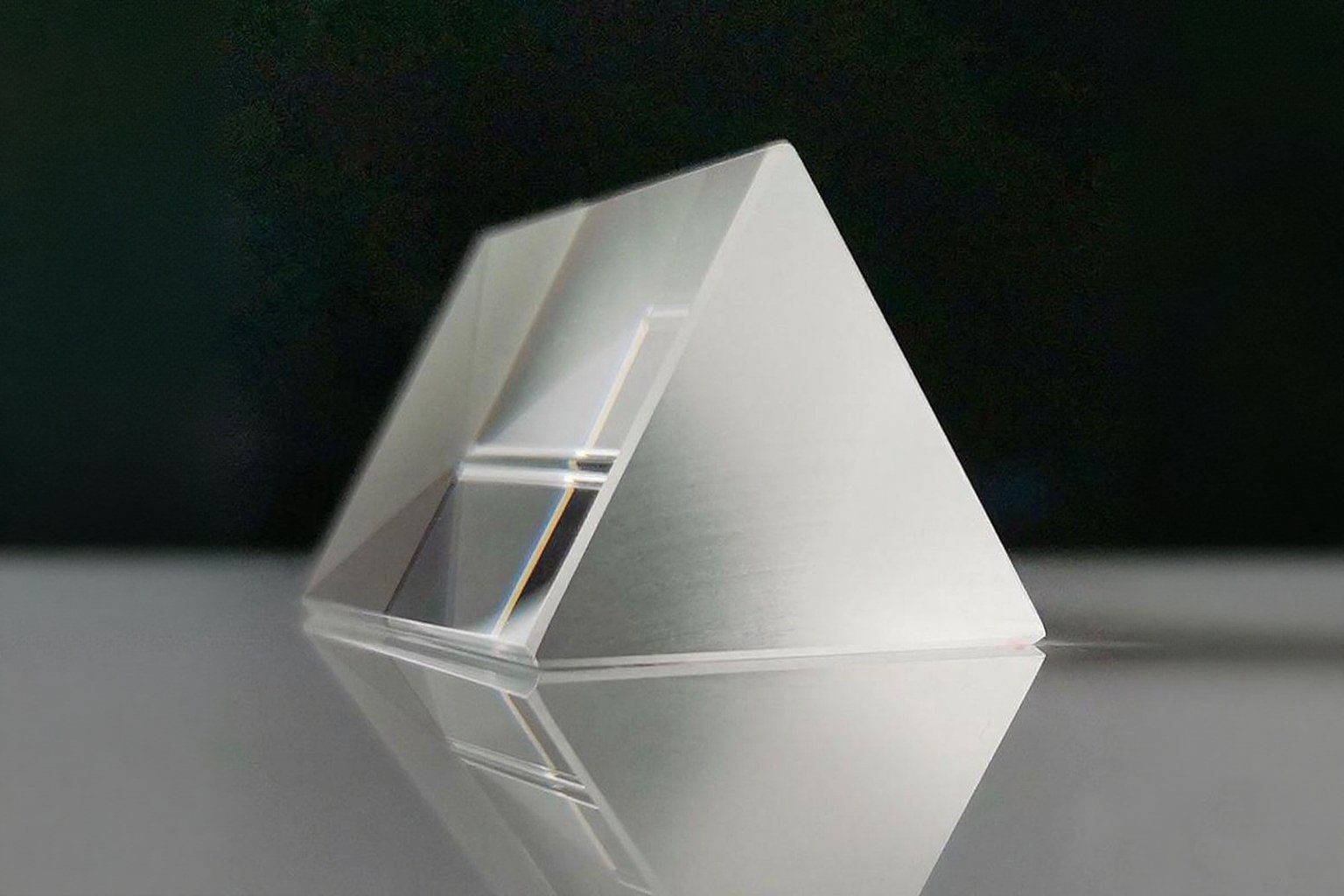Types and Applications of Optical Prisms
An optical prism is a polyhedral optical element made of transparent materials such as glass, crystal, etc., which changes the direction of light propagation, polarization state, or spectral composition by refracting, reflecting, or dispersing light.

The following are common types of optical prisms and their applications:
1. Prism types and applications classified by function
Refractive prism:
Principle: By utilizing the difference in refractive index of light of different wavelengths, polychromatic light is decomposed into monochromatic light (dispersion phenomenon).
Common types:
Triprism: The most basic refractive prism with a triangular cross-section.
Amisi prism: composed of multiple prisms made of different materials, which can eliminate some color differences.
Application:
Spectral analysis instruments (such as spectrophotometers and spectrometers) are used for detecting substance composition.
Prism spectrometer is used for analyzing the chemical composition of celestial bodies in astronomical observations.
Demonstrate the dispersion phenomenon of light in teaching experiments.
Reflective prism:
Principle: By using total reflection or specular reflection to change the direction of light propagation, replacing a flat mirror (reducing reflection loss and improving stability).
Common types and applications:
Right angle prism:
The cross-section is a right angled triangle, which can deflect light by 90 ° or 180 °, or achieve image flipping.
Applications: Camera viewfinder, periscope, telescope optical path steering, laser rangefinder reflection system.
Roof prism:
Add a "ridge" structure at the right angle edge of the right angled prism, which can fold the optical path and correct the left and right reversal of the image.
Application: Small binoculars (such as the Paul telescope) to reduce equipment size.
Pentagonal prism:
The cross-section is pentagonal, which can accurately deflect light by 90 degrees without being affected by small changes in the incident angle.
Application: Surveying instruments (such as total stations), sights, ensure stable turning of the light path.
Dawei Prism:
It resembles a truncated right angled prism, and when light passes through it, it rotates 180 ° around the optical axis. Rotating the prism can change the imaging direction.
Application: Image rotation device for microscopes, image correction in aerial photography.
Polarization prism:
Principle: By utilizing the birefringence property of crystals, natural light is decomposed into two beams of polarized light that are perpendicular to each other, and one of the beams is absorbed or separated.
Common types and applications:
Nicol prism:
Made by cutting and bonding calcite crystals, it can produce linearly polarized light.
Application: Polarized light experiment, polarized light microscope, used for observing birefringent materials such as crystals and fibers.
Gran Taylor prism
A polarizing prism with high transmittance, suitable for the ultraviolet to infrared wavelength range.
Applications: Polarization control in laser systems, polarization state adjustment in optical communication.
Deflection prism:
Principle: By using a refractive surface at a specific angle, light rays are deflected at a predetermined angle (not special angles such as 90 °/180 °).
Common types:
Wedge mirror: The cross-section is wedge-shaped, and a single piece can slightly deflect the light. The combination of two pieces can adjust the deflection angle.
Diagonal prism: capable of translating light without changing direction, used to adjust the position of the optical path.
Application:
Adjust the beam path in the laser marking machine and laser welding machine.
Optical system calibration, compensating for optical path offset.
2. Special prisms classified by shape
Equilateral prism: with a cross-section of an equilateral triangle, commonly used in dispersion experiments and spectral analysis.
Corner Cube Prism:
Composed of three mutually perpendicular reflecting surfaces, it can reflect incident light back in its original direction (regardless of the incident angle).
Applications: Laser ranging (such as lunar laser ranging experiments), reflective road signs, optical tracking systems.
3. Comprehensive application fields of prisms
Optical instruments: microscopes, telescopes, cameras, projectors, etc., used for optical path steering and imaging correction.
Laser technology: laser radar, laser communication, laser processing equipment, controlling beam direction and polarization state.
Surveying and Navigation: Total Station, Gyroscope, Satellite Positioning System, Stable Optical Path to Ensure Measurement Accuracy.
Spectral analysis: Environmental monitoring, materials science, biomedicine, analyzing substance composition through dispersion characteristics.
Daily life: Polarized sunglasses (using polarizing prisms to filter glare), anti-counterfeiting labels (using the light reflection characteristics of prisms).
There are various types of optical prisms with different functions, and the core is to control the optical path through the refraction, reflection, or polarization characteristics of light. From basic teaching experiments to advanced aerospace technology, prisms are indispensable optical components, and their design and application directly affect the performance of optical systems.

